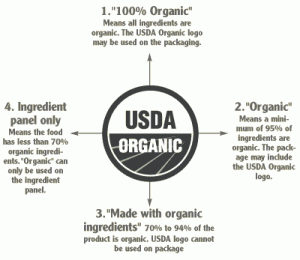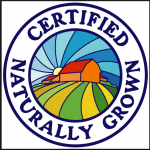Organic, Natural and the Guidelines
The label ling rules for organic and natural products do vary depending on the country you are living in.
ling rules for organic and natural products do vary depending on the country you are living in.
Labelling Rules are a set of standards set out for growing, processing, packaging, shipping and storing food products.
Any business that is directly involved in that food production is included in this. That means if you are a seed supplier, farmer, processor, restaurant or retailer you are required to go by these labelling rules.
Generally these set of rules require the following:
Avoiding synthetic chemicals such as pesticides, antibiotics, foor additives, fertilizers etc. This includes avoiding any genetically modified organisms
Using farmland that has been free of chemicals for three years, this can sometimes be more than three years
Keeping up to date accurate records of your production as well as sales numbers
There must be a ver strict separation between non-certified products and certified products in order to avoid any contamination
Allowing inspections of your premises.
Non-certified and Certified producers still have to adhere to the same agriculture, food safety and other government regulations that may apply, but getting the special certified label requires additional precautions to ensure that consumers are receiving what they are expecting.
Levels of Labelling
 There are four levels of RTA labelling rules for organic and natural products which are:
There are four levels of RTA labelling rules for organic and natural products which are:
100 % Organic – this means that all the ingredients are organic. The USDA Organic logo can be used on the packaging for this product.
Organic – which means that a minimum of 95% of the ingredients that create the product are organic. The packaging for this product may include the USDA Organic logo
Made with Organic Ingredients – 70 – 94% of this product is made with organic ingredients – the USDA logo may not be used for packaging of this product
Panel Ingredient Only – this means that the food has less than 70% organic ingredients “organic” can only be used on the ingredient panel.
There may still be some chemical-free ingredients in the product, but there can be no mention of certification on the product label, but the specific unrefined ingredient may be specified on the ingredient list.
What about Natural
This applies to ingredients that have not been processed with chemicals or synthetics after leaving the farm. The farm may have maximized its spraying limits during the growing season, but the product has not been subject to any other chemicals after leaving the farm.
I find the word natural to be so overused, plunk this word into a thesaurus and it brings up other words such as pure, wholesome, unrefined. Like other words additive-free, authentic, farm fresh, handmade, these are all terms the lead us to think the item is 100% natural or chemical free, such as naturally inspired, no animal testing, fair trade.
Next time you go to the grocery store, here is an easy way to check your products by reading the codes on the items you are buying:
5 digits – starting with a 9 – produce grown organically
4 digits – starting with 3 or 4 – grown conventionally
5 digits – starting with 8 – produce genetically modified
It can be hard to really know the truth with the way marketing used words can lead us into believing something else. Just really read your ingredients and know what your are buying.
For more information what to look for when buying natural products go to Naturally Inspired
© 2016, Tes. All rights reserved.